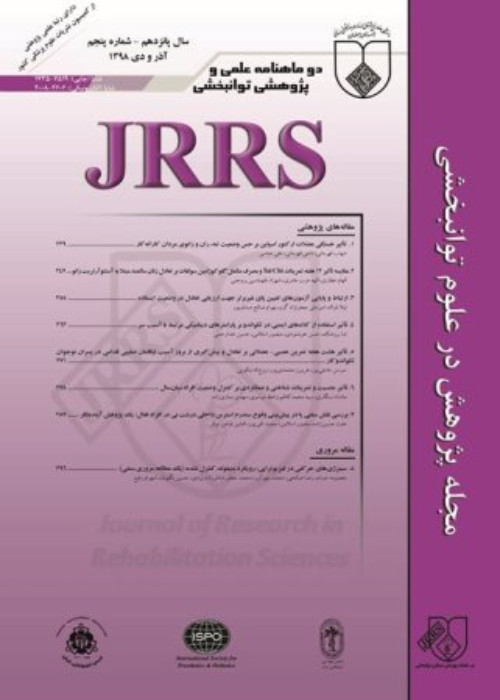The Relationship between Quiet Eye and Motor Performance in Children with Developmental Coordination Disorder
Author(s):
Abstract:
Introduction
Final fixation prior the initiation of movement is called quiet eye (QE). Research has shown that quiet eye components are related to high level of expertise and performance. The purpose of study was to examine the relationship between the quiet eye and motor performance in children with developmental coordination disorder.Materials And Methods
In this descriptive-correlation study, 30 children at the age of 7 to 14 years were selected via multiple clustering sampling in Isfahan City, Iran. Participants were performed throwing and catching task to 10 trials. The data were recorded by an eye-tracking device when participants performing the desired task. We used Shapiro-Wilk test to determine the normality of data and Pearson correlation coefficient to analyze the relationship between quiet eye and motor performance.Results
There was significant negative correlation between catching performance and onset of quiet eye (r = -0.838, P Conclusion
The result of this study revealed that the quiet eye can be considered as a predictor of motor performance in children with developmental coordination disorder.Keywords:
Language:
Persian
Published:
Journal of Research in Rehabilitation Sciences, Volume:12 Issue: 6, 2017
Pages:
350 to 361
magiran.com/p1730624
دانلود و مطالعه متن این مقاله با یکی از روشهای زیر امکان پذیر است:
اشتراک شخصی
با عضویت و پرداخت آنلاین حق اشتراک یکساله به مبلغ 1,390,000ريال میتوانید 70 عنوان مطلب دانلود کنید!
اشتراک سازمانی
به کتابخانه دانشگاه یا محل کار خود پیشنهاد کنید تا اشتراک سازمانی این پایگاه را برای دسترسی نامحدود همه کاربران به متن مطالب تهیه نمایند!
توجه!
- حق عضویت دریافتی صرف حمایت از نشریات عضو و نگهداری، تکمیل و توسعه مگیران میشود.
- پرداخت حق اشتراک و دانلود مقالات اجازه بازنشر آن در سایر رسانههای چاپی و دیجیتال را به کاربر نمیدهد.
In order to view content subscription is required
Personal subscription
Subscribe magiran.com for 70 € euros via PayPal and download 70 articles during a year.
Organization subscription
Please contact us to subscribe your university or library for unlimited access!


